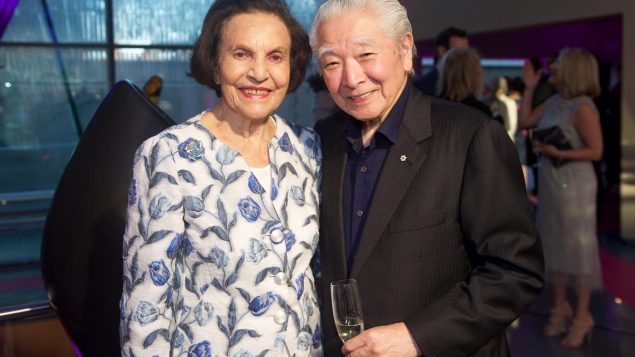Bata Shoe Museum founder, Sonja Bata, died Tuesday February 20th in Toronto, at the age of 91.
The visionary behind what’s described as the world’s “most comprehensive collection of historic footwear”, Sonja Bata leaves an amazing legacy to the city that was her second home.
Born in Zurich, Switzerland, Sonja Wettstein was studying architecture when she married Czech-Canadian Thomas Bata. who was then heir to an international shoe manufacturing and retail empire.
ListenSheila Knox is the acting director of the Bata Shoe Museum. She describes how Sonja’s collecting began, on business trips with her husband.
“This was back in the late 1940’s and 1950’s when many cultures in the world were still wearing their traditional clothing and had not adopted western dress.” Knox explains.
“She felt if she could bring home examples of these traditional shoes, and examine them and understand what people in those countries were used to wearing, perhaps she could design footwear that was western but it might have some of the same characteristics or appeal,” Knox said.
“When she had about 1,500 pairs of shoes in her basement, a friend of hers who was an anthropologist took a look at them and said, ‘You know, these really are museum worthy. They’re not being worn very much or at all anymore; they’re not made anymore. You really should have them kept properly and safely in a museum setting.’ And that was in 1979 when she decided to found the museum,” Knox told CBC News in Toronto.

The Bata Shoe Museum, designed by Raymond Moriyama, in downtown Toronto. (courtesy of BSM)
Now, with 13,000 artefacts the museum showcases everything from en extensive collection of Native American and Circumpolar footwear to a velvet-covered platform chopine from 16th century Italy.
In 2018, the museum’s calendar features a sneaker for every day of the year. But if you’d like to know what they were wearing in ancient Egypt, there is pair of sandals from that era, 4.500 years ago.
“One of the crowning achievements of Mrs. Bata’s work, was that she was able to fund research expeditions into the Arctic, where our researchers could live with, and learn from elders who were still making traditional fur boots and be able to document the process because this was also very much part of Mrs. Bata’s vision, that the methods of shoe-making that were in danger of being lost would be rescued and kept for posterity.”
Sonja Bata is also being remembered in Batawa, Ontario. It is the company town the Bata family opened around the new shoe factory in 1939.
Following the closure of the factory in 2000, Mrs. Bata was involved in the re visioning and revival of the community 175 kilometres east of Toronto.
The five-storey factory is currently being re-modelled into a sustainable multi-purpose condominium building and is scheduled to open in the spring of 2019.
Meanwhile, The Bata Shoe Musuem will host, Manolo Blahnik: The Art of Shoes, beginning in mid-May.







For reasons beyond our control, and for an undetermined period of time, our comment section is now closed. However, our social networks remain open to your contributions.